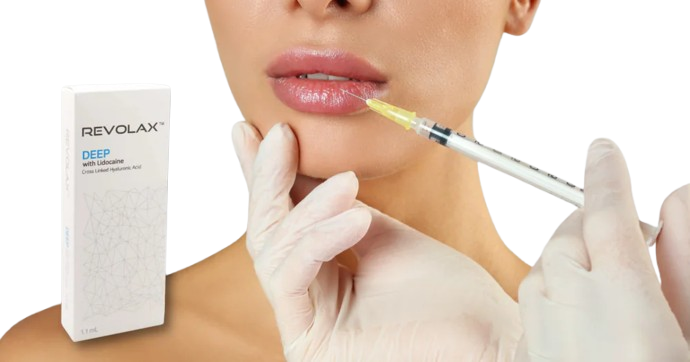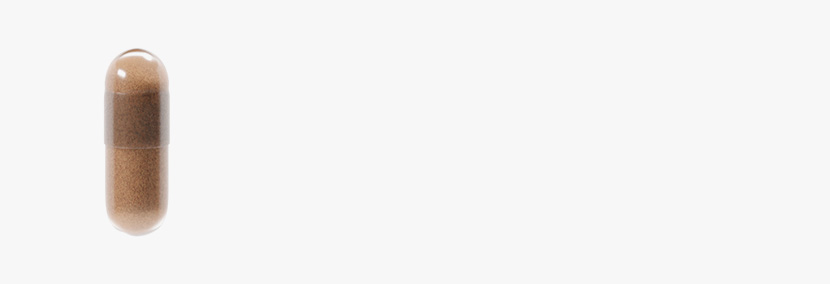Lumigan
Lumigan vs Latisse – Comparing Treatments
Sep 3, 2025
Human eyelashes have an average growth cycle of 4 to 11 months, with the anagen (growth) phase lasting approximately 30 to 45 days. This short growth window explains why enhancing lash length and density through pharmacologic means has gained popularity in both clinical and cosmetic settings.
Two bimatoprost-based products, Lumigan and Latisse, have emerged as key players in this space. While they share the same active ingredient, their concentrations, delivery methods, and approved uses differ. One is designed to manage intraocular pressure, while the other is designed to stimulate eyelash growth. Understanding how these differences impact efficacy and safety is crucial for making informed treatment decisions.
In this article, we’ll compare Lumigan and Latisse across formulation, mechanism, indications, safety profiles, and clinical considerations, helping you navigate their distinct roles in eye care and aesthetics.
Key Takeaways
- Lumigan (0.01%) is prescribed to lower intraocular pressure in glaucoma and ocular hypertension, while Latisse (0.03%) is FDA-approved for eyelash enhancement.
- Both contain bimatoprost but differ in concentration, method of application, and therapeutic goals.
- Lumigan protects vision by reducing eye pressure; Latisse produces longer, thicker, and darker lashes with regular nightly use.
- Side effects can include redness, irritation, and pigmentation changes; Latisse’s higher concentration may increase the risk of localized effects such as eyelid darkening.
- Lumigan has extensive long-term safety data for chronic glaucoma therapy, while Latisse requires monitoring for skin and periocular tolerance.
- Treatment choice should reflect whether the goal is preserving vision or improving lash appearance, alongside the patient’s comfort with potential side effects.
- Physician supervision is essential to ensure safe use, manage risks, and align outcomes with patient expectations.
About: Trusted by over 2,000+ global clients since 2014, Maylips has become a leading supplier of cosmetic, skincare, and orthopedic products for medical and aesthetic professionals. Maylips offers a wide range of authentic brand-name products at competitive wholesale prices, sourced from around the world. If you’re looking to buy Lumigan online, contact our sales team for guidance.
Comparing Mechanisms: Lumigan vs. Latisse
Lumigan and Latisse both contain bimatoprost, a prostaglandin analog, yet they serve very different purposes.
- Lumigan (marketed as 0.01% in the U.S., with 0.03% formulations still present in some regions) is approved for open-angle glaucoma and ocular hypertension. It lowers intraocular pressure (IOP) by increasing aqueous humor outflow through both uveoscleral and trabecular pathways, which helps reduce the risk of glaucomatous damage and disease progression.
- Latisse (0.03%) is FDA-approved for eyelash hypotrichosis, a condition where lashes are inadequate in length or density. Its exact mechanism is not fully understood, but it is believed to increase the proportion of follicles in the anagen phase and prolong its duration, resulting in longer, thicker, darker lashes over time.
Despite sharing the same active ingredient, these two products differ in concentration, delivery method, and clinical goals. Importantly, using Lumigan for lash growth is off-label, while Latisse is specifically approved for cosmetic use.
Differences in Formulation and Indications for Lumigan vs Latisse
While both products are bimatoprost-based, their formulations and indications reflect very different therapeutic intent.
Formulation Differences


- Lumigan (0.01%): This lower concentration, paired with a modified preservative system, can maintain efficacy while improving ocular tolerability, particularly reducing conjunctival hyperemia compared with the older 0.03% formulation.
- Latisse (0.03%): The FDA-approved strength for cosmetic lash enhancement. Clinical use has shown it can produce longer, fuller lashes, though local side effects like redness, itching, or pigmentation changes are possible.
Indication Differences
- Lumigan: Approved to lower IOP in glaucoma and ocular hypertension, reducing the risk of optic nerve damage and protecting long-term vision.
- Latisse: Approved for eyelash hypotrichosis, whether from aging, medical conditions, or cosmetic preference.
These differences guide prescribing decisions: Lumigan remains a sight-preserving therapy, while Latisse meets aesthetic goals for patients seeking lash enhancement.
Efficacy and Safety Comparisons: Lumigan vs Latisse
The overlap between these products became clear when glaucoma patients on Lumigan noticed an unexpected benefit — indirect use of Lumigan for eyelashes resulted in longer, darker, and thicker lashes. This observation directly led to the development of Latisse as a targeted cosmetic product.
Efficacy Highlights
- Lumigan: Well-established in lowering IOP and slowing glaucoma progression, helping reduce the risk of visual field loss.
- Latisse: Demonstrates consistent cosmetic results, with most users noticing lash growth by 8–12 weeks, and full results typically achieved by 16 weeks. If discontinued, lashes gradually return to baseline.
Safety Considerations
- Lumigan: Potential side effects include conjunctival hyperemia, eyelid darkening (usually reversible), and iris pigmentation (which may be permanent). Prostaglandin-associated periorbitopathy — including deepening of the upper eyelid sulcus, periocular fat atrophy, or ptosis — has also been reported.
- Latisse: Local side effects include skin darkening, itching, and redness, with risks similar to Lumigan if medication enters the eye. As with Lumigan, iris pigmentation can be permanent. Unintended hair growth may occur if the solution spreads beyond the lash line. Patients should apply only to the upper lash line, avoid the lower lid, remove contact lenses before use, and reinsert them after 15 minutes.
Both products are generally well-tolerated when used as directed, but patient counseling and monitoring are key.
Clinical Considerations When Choosing Lumigan vs. Latisse
Choosing between Lumigan and Latisse depends on the patient’s needs, medical history, and goals.
Key Factors to Consider


- Intended Use: Lumigan is strictly for IOP reduction in glaucoma and ocular hypertension. Latisse is for cosmetic eyelash enhancement.
- Medical History: Patients with ocular disease require Lumigan for therapeutic reasons, while healthy individuals may consider Latisse for cosmetic goals.
- Risk Tolerance: Those concerned about pigmentation changes, redness, or periorbital changes need careful counseling.
- Treatment Duration: Lumigan is long-term for disease control. Patients may discontinue using Latisse once they achieve cosmetic results, though they may need ongoing use to maintain lash length.
- Concurrent Use: In glaucoma patients already on prostaglandin therapy, adding Latisse should be done only under physician supervision. Periocular exposure may influence IOP readings or treatment response.
Ultimately, therapy should reflect both clinical necessity and patient priorities, with risks and expectations clearly explained.
Conclusion
Comparing Lumigan vs. Latisse highlights how the same active ingredient can serve very different roles. Lumigan remains a cornerstone therapy for protecting vision in glaucoma and ocular hypertension, while Latisse fulfills an aesthetic need for patients seeking fuller lashes.
Their differences in formulation, concentration, and approved indications shape how they are used. While both carry risks of hyperemia, pigmentation changes, and periorbital effects, careful counseling ensures patients understand benefits, limitations, and proper application. Whether preserving sight or enhancing lashes, bimatoprost-based therapies are powerful tools — but only when tailored to the right patient, at the right dose, for the right purpose.
FAQs
1. What is the main difference between Lumigan and Latisse?
Lumigan lowers intraocular pressure in glaucoma and ocular hypertension, while Latisse is FDA-approved for cosmetic eyelash enhancement.
2. Can Lumigan work for eyelash growth?
While both contain bimatoprost, only Latisse has FDA approval for lash growth. Using Lumigan for this purpose is off-label.
3. What are the common side effects of Lumigan?
They include conjunctival hyperemia, mild irritation, eyelid skin darkening (usually reversible), and iris pigmentation (which may be permanent).
4. How soon does Latisse show results?
Visible lash improvements are often seen within 8–12 weeks, with full results by 16 weeks. Stopping treatment leads to a gradual return to baseline.
5. Are pigmentation changes permanent with these treatments?
Eyelid skin darkening typically fades after discontinuation, but iris pigmentation may be permanent.
6. Is there a difference between Lumigan 0.01% and Latisse 0.03%?
Yes. Lumigan is marketed primarily as 0.01% in the U.S. for IOP reduction, while Latisse is 0.03% for lash growth. Their approved uses and application sites differ.
7. Can I use both treatments together?
Not usually. For patients who want to use both, they should first seek physician supervision. This is especially important in glaucoma patients, since periocular bimatoprost exposure may influence IOP control.
Talk with our sales representative.
Book a Meeting
References
Aumond S, Bitton E. The eyelash follicle features and anomalies: A review. Journal of Optometry. 2018;11(4):211-222. doi:10.1016/j.optom.2018.05.003
Smith S, Fagien S, Whitcup SM, et al. Eyelash growth in subjects treated with bimatoprost: A multicenter, randomized, double-masked, vehicle-controlled, parallel-group study. Journal of the American Academy of Dermatology. 2011;66(5):801-806. doi:10.1016/j.jaad.2011.06.005





